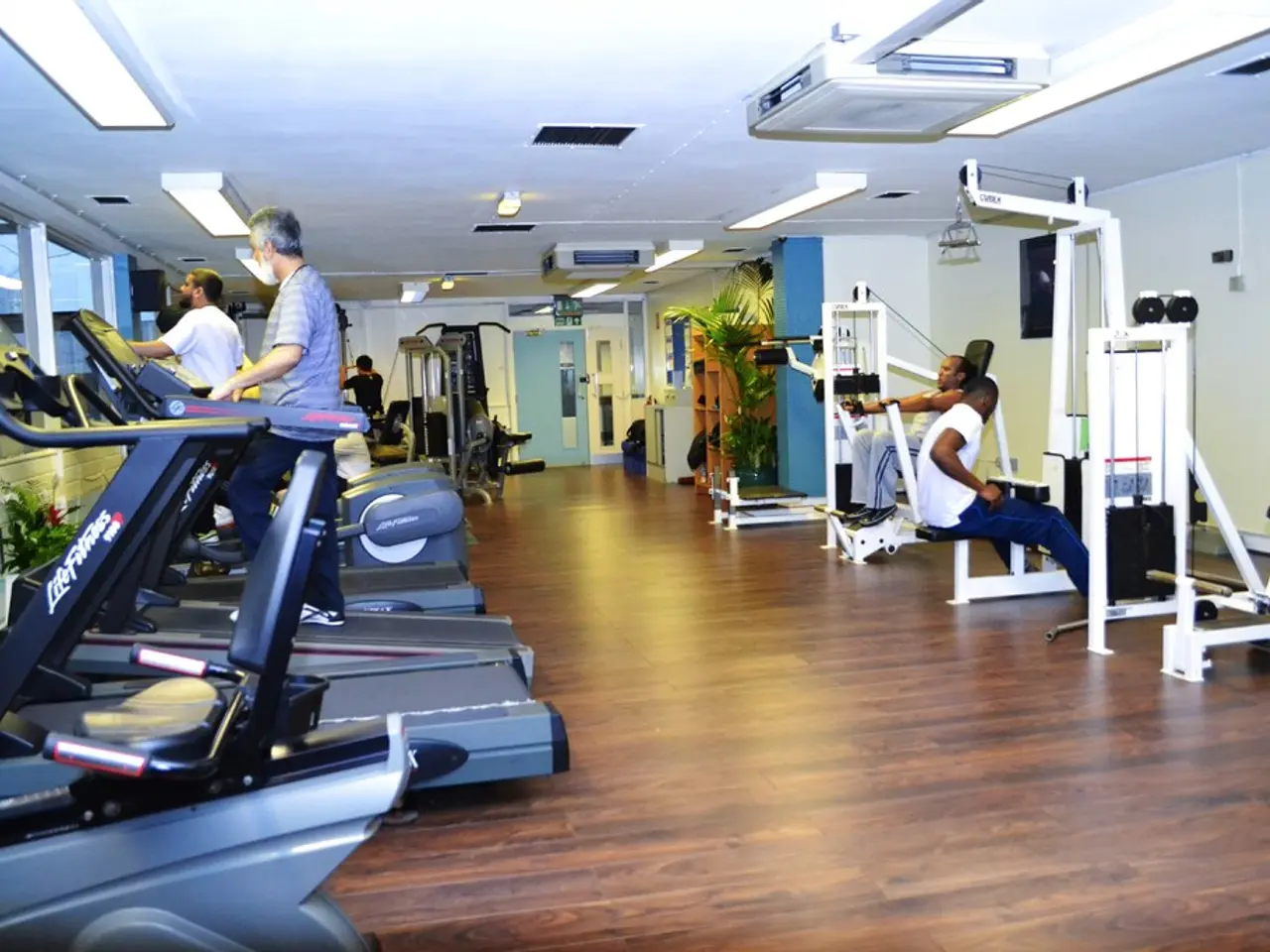Images-Supported Workout Routine to Minimize Cellulite Appearance
Reducing Cellulite: A Comprehensive Approach
Cellulite, a common concern for many, is not easily eliminated with a single treatment. However, a consistent exercise regimen focused on lower body muscle strengthening, cardiovascular activity, and a balanced diet can help reduce its appearance and improve overall body tone.
The key components of this approach include:
- Lower Body Strength Training: Exercises such as squats, lunges, and glute bridges are particularly effective for targeting common cellulite areas like the thighs, buttocks, and hips. These exercises help build lean muscle under the skin, tightening and toning the area, making cellulite less visible.
- Cardiovascular Activity: Regular physical activity like power walking, cycling, or other aerobic exercises enhances circulation and helps burn fat, thereby reducing the prominence of cellulite.
- Consistency: Performing lower body strength training 2–3 times per week, combined with consistent cardio, yields more noticeable results. Quick or sporadic workouts are less effective.
- Low-Impact Workouts: Incorporating low-impact workouts like Pilates can sculpt legs and glutes while reducing swelling, further improving the skin's appearance.
- Supportive Nutrition: Maintaining a healthy diet low in sugar, salt, and processed foods while rich in antioxidants, lean proteins, and hydration can help reduce inflammation and fluid retention that worsen cellulite appearance.
It's important to note that localized exercises alone do not "train away" cellulite in targeted spots. Overall body fat reduction alongside muscle toning is necessary.
In addition to exercise, regular vigorous exercise may benefit both body composition and mood, helping a person feel more confident about their body.
Pushups, targeting the chest, shoulders, and triceps, and dumbbell rows, targeting the biceps, shoulders, and lats, can be performed 2 to 3 times per week. Glute bridges and split squats, effective for working the glutes and lower body, can also be included in this schedule.
For those finding pushups challenging, modifications like lowering the knees to the floor can be made. Some people might also like to make split squats more difficult by holding a dumbbell in each hand. To make glute bridges more challenging, stretching one leg out straight while performing the exercise can be considered.
Despite the efforts put in, it's essential to remember that there is little scientific data about how long it takes to get rid of cellulite, so patience and persistence are key.
- Cellulite, a concern often paired with conditions like diabetes, obesity, and multiple sclerosis, requires a consistent and comprehensive approach for reduction.
- Susceptibility to cellulite may increase with inflammatory conditions such as spondylitis, psoriatic arthritis, and ulcerative colitis.
- A balanced diet rich in antioxidants and lean proteins can help manage cellulite, aiding in overall health-and-wellness and weight-management.
- Psoriasis, a skin condition characterized by red, scaly patches, often coexists with other autoimmune diseases like psoriatic arthritis.
- Science has yet to uncover a definitive solution for predictive markers in diseases like cancer, Alzheimer's, and multiple sclerosis, but research continues to advance in the field.
- Aq, a nutritional supplement, is sometimes used in weight management due to its potential benefits for maintaining healthy blood sugar levels and supporting immune function.
- Specifically, Aq may contribute to weight loss by curbing appetite and aiding with digestion, although its exact role remains to be thoroughly studied.
- Regular exercise can help prevent lifestyle-related diseases such as diabetes and heart disease, and may also play a role in preventing cancer.
- While cellulite concerns many, other health issues like lung disease, pulmonary fibrosis, and chronic obstructive pulmonary disease may require different approaches for management.
- A comprehensive approach to health-and-wellness should also incorporate professional guidance from healthcare providers for addressing specific health concerns and creating a personalized plan for improvements.




